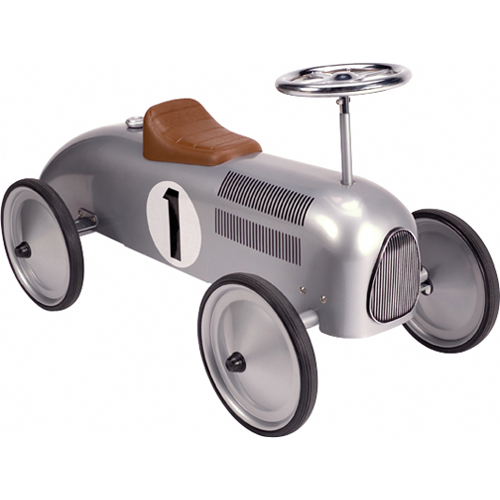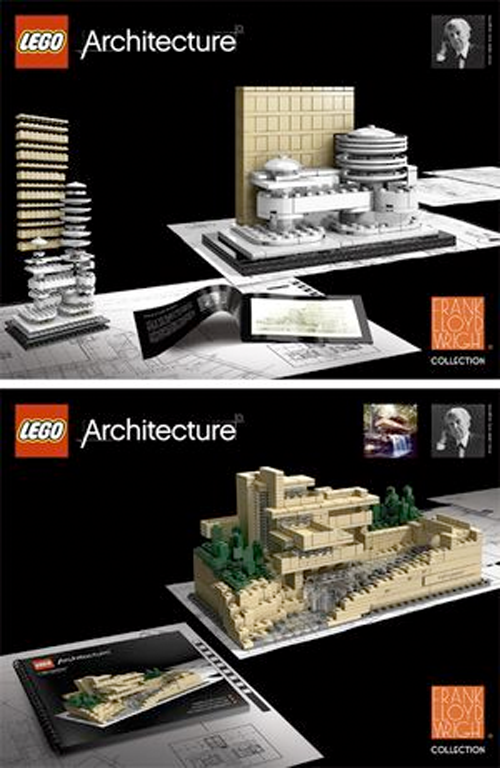lego is biggest toy maker in the world.
lego is biggest toy maker in the world. topped barbie doll-maker mattel. via industry tap [RK]
lego is biggest toy maker in the world. topped barbie doll-maker mattel. via industry tap [RK]
ladislav sutnar. prototype for build the town building blocks. 1940–43. painted wood, large block: 1 3/4 x 2 3/4 x 2 3/4″ (4.4 x 7 x 7 cm) | click > enlarge
Curated by Juliet Kinchin, curator, and Aidan O’Connor, curatorial assistant in the Department of Architecture and Design is MoMA’s survey of 20th century design for children. It takes on “the modernist preoccupation with children and childhood as a paradigm for progressive design thinking.” —and much more. It is built on the ideas of Swedish design and social theorist Ellen Key. It is also overwhelming.
 avante-garde playtime: 1910s > 30s
avante-garde playtime: 1910s > 30s
It encompasses 500 objects, from Froebel blocks to playground plans by Isamu Noguchi to Roald Dahl books. The show might arguably be a better book or film documentary, since the scale of objects varies so much and so much explanation is needed. It seems to carry a heavy central European flavor; Kindergarten, of course was a German word and thinking about childhood psychology was tied to Vienna.
Where is Asia? Where, for that matter, is America? A tighter focus might have been on say toys–where education and entertainment play out their antithesis and offer a way into the wider topic. The whole idea of “fun”– a modern idea, associated with the child, seems absent here. Fun, as a philosophical concept. Fun, as a consumerist value.
Despite the size of the show, wandering through it reminds the viewer of what is left out. One of the key roles of the child in design is as a base case for the psychology of learning and interface—the labs of Seymour Papert led to Graphic User Interface. And American and global commercialism is de emphasized. The brute marketing force of Disney and Mattel and Kellogg’s is critical to this story. Where is the My First Sony line of electronics, for instance?
As early as Giacomo Balla and the Futurists, designers understood that grown ups would want kid’s stuff. We adults want the children’s toys—and their bright colors and basic shapes. Or did we assign those things to children to begin with because we secretly wanted them ourselves? [ century of the child ] [ moma ]
<a href=" about phil patton
about phil patton

A study station. A collaboration enclave. A brain storming zone. Or a nerf ball fort. The possibilities are almost infinite. Even parents can put it together.
[ brik-a-bloc ]

new meaning to recycling and hybrids.
artist [sang won sung] creates art that takes you back to your childhood in a most interesting way.
 zoe miller and david goodman, the UK-based toy designers, got their start making children’s books exclusively for the tate gallery.
zoe miller and david goodman, the UK-based toy designers, got their start making children’s books exclusively for the tate gallery.

They made Color and Shape following the success of their 2004 debut, A is for Artist and two years ago they made their foray into children’s toys with the award-winning Shapemaker, a take on those old wooden block puzzles you may have played with as a child. The design improvements abound, with shapes hand-printed onto “environmentally friendly hardwood blocks made of rubber wood – a replenishable wood,” quite a step up from the block puzzles of my childhood, which were pasted on all sides with squares of paper that would inevitably come unglued after hours of continuous play. The Shapemaker, which boasts a seemingly endless array of puzzle combinations may be intended for preschoolers, but its aesthetic and tactile qualities appeal to kids of all ages.
Designer: millergoodman

about perrin drumm
 here we go. let’s play house or designer / architect.
here we go. let’s play house or designer / architect.
newly listed, the emerson house is the perfect home for the modern family. the home has six rooms including a living room, kitchen, library/office, master bedroom, bathroom and child’s bedroom. With an open floor plan and floor-to-ceiling windows, the emerson house enjoys year-round sunlight. the modern house features many extras including mitered-glass corners, two fireplaces, sliding glass doors, solar panels, and recessed LED lights. finally, the house is easy on the environment with only non-toxic and lead-free wood stains and paints.
• 18”H 22”W 36”L
• scale: 3/4″ ( 1:12 )
• lights powered by solar panels
• Designers: tim boyle & doug rollins
a beautiful house deserves beautiful furniture. this living room set creates the perfect atmosphere for entertaining guests, reading a good book or relaxing with family. the set features eleven pieces including TV console, lamps, HD television, sofa, chairs, coffee table, console, side table and rug.
• scale: 3/4″
• 11 pieces
• materials: wood, fabric, leather
 they’re called green toys because they save energy.
they’re called green toys because they save energy.




how much energy is saved ? on average(*), every pound of recycled milk jugs used in the making of green toys:
saves energy equal to 3,000 aaa batteries.
saves enough electricity to power a tv set for three weeks.
saves enough electricity to keep a laptop computer running for a month.
(*) compared to non-recycled plastic.
green toys says it uses recycled milk containers as the main ingredient in creating their toys. when you finish your milk and toss the container in the recycling bin, the milk containers are collected at your curb by a local recycling company who separates them from all the other types of plastic. next, the milk containers are reprocessed into super clean fresh plastic. for the plastic geeks, the plastic material is high-density polyethylene (or HDPE). this material is considered one of the safest, cleanest plastics around.
 classic speedster car with a working steering column, rubber tires, and working horn.
classic speedster car with a working steering column, rubber tires, and working horn.
built from steel and chrome, it makes a hearty foot-powered toy or art for those so inclined. age range/weight capacity: from 1 year and up to 42 lbs.
Price: $100 USD
Producer: shylling
 The official announce – ment of the new line of licensed Frank Lloyd Wright LEGO sets.
The official announce – ment of the new line of licensed Frank Lloyd Wright LEGO sets.
Created in conjunction with the Frank Lloyd Wright Foundation, Brickstructures, Inc. and the LEGO Architecture brand, the first two sets in the series are The Guggenheim and Fallingwater.
Here are the detail via the press release we received:
The Frank Lloyd Wright Foundation announced today that The LEGO Group is now the exclusive licensed manufacturer of Frank Lloyd Wright Collection® LEGO Architecture sets.
The LEGO Group and Adam Reed Tucker of Brickstructures, Inc. officially introduced the LEGO Architecture line in 2008. The line currently consists of six buildings – now including two of Frank Lloyd Wright’s most famous and recognizable buildings, the Solomon R. Guggenheim Museum and “Fallingwater.”
With models developed in collaboration with architects, LEGO Architecture works to inspire future architects, engineers and designers as well as architecture fans around the world with the LEGO brick as a medium. Builders of all ages can now collect and construct their favorite worldwide architectural sites through these artistic replicas.
Both exclusive Frank Lloyd Wright LEGO Architecture sets contain booklets that feature traditional building instructions along with exclusive archival historical material and photographs of each iconic building.
According to Director of Licensing and Product Development, Doug Volker, “The LEGO product was one that the Frank Lloyd Wright Foundation had considered pursuing for several years. It was the vision, passion and creative desire of Adam Reed Tucker to capture the essence of Mr. Wright’s most famous buildings using the medium of the LEGO brick that brought this partnership into being.”
“Mr. Wright’s buildings are a treasure trove of possibilities,” says Adam Reed Tucker, innovator of the Architecture Series for The LEGO Group. “I wanted to create these marvelous buildings for years, so I’m thrilled to be working with the Foundation in order to include Mr. Wright’s timeless buildings in this series, which conceptualizes the very essence of each building in LEGO bricks.”
Images copyright LEGO, Brickstructures and the Frank Lloyd Wright Foundation
via prairiemod
All content ©2007 > 2024 DesignApplause